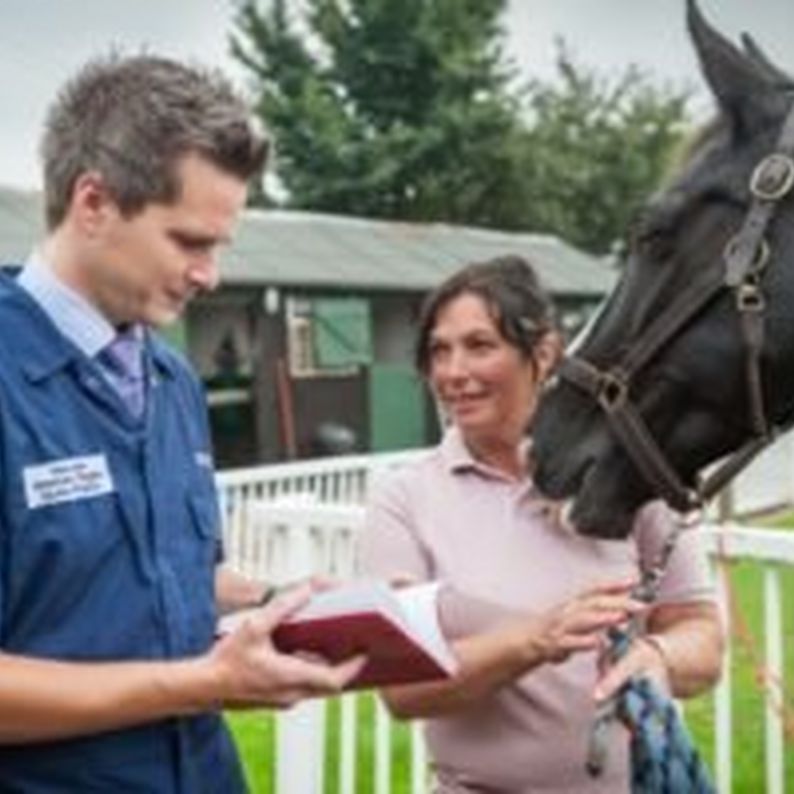
Our horses immune systems aren’t dissimilar to our own. This means that just like you and I, they require vaccinations. Our horse’s environments contain disease causing bacteria, viruses, funguses and parasites. Collectively, these are known as pathogens. The first line of defence against pathogens is to stop them entering the body. This comes down to proper biosecurity and hygiene, but also natural defences like skin and mucus. But when this fails, what happens?
How do vaccinations work?

When a pathogen is inhaled or ingested by your horse, the immune system works hard to fight and eradicate it, using antibodies. Antibodies are like their very own highly trained soldiers. However, they’re a bit of a one trick pony! Each antibody is specific to a type of antigen, this is a subpart of the pathogen. Our horses have countless different types of antibodies because each time they’re exposed to something new, they must learn how to fight it! Think of it like a lock and a key. When a pathogen enters for the first time, it can take a while for the body to respond properly. This is when your horse is most susceptible to becoming ill. That’s where vaccinations come in.
Why vaccinate?
Vaccinations are a bit like education for the immune system, teaching them how to generate the right antibodies. They won’t make our horses sick, but can help them to respond more effectively if they’re exposed to the real thing.
Every horse over 6 months old should be vaccinated against Equine Influenzas and Tetanus. These are usually combined in one effective program. Take a look at why it’s so important…
Equine Influenza
Equine influenza, also known as ‘the flu’ is a severe viral respiratory tract disease. Airborne and highly infections, it spreads quickly amongst unvaccinated equines.
Symptoms
With a short incubation period, symptoms such as a high temperature, nasal discharge, swollen glands and coughing can occur just three or four days after exposure. If your horse is showing any symptoms, quick and effective isolation is key to stopping the virus spreading.
Treatment
Your vet will likely recommend a mucolytic agent to thin the mucus and antibiotics to prevent secondary infections. While visible symptoms may ease after around a week, the internal damage will take longer to repair! Flu attacks the lining of the respiratory tract. So, at least six weeks of total rest in a well ventilated and non-dusty environment are needed before returning to work.
Tetanus
Painful and distressing, this is one of the most traumatic diseases for both horse and owner to deal with. Tetanus also known as lockjaw, is caused by the bacterium Clostridium tetani. This is found in soil and horse faeces. The infection is able to take hold when the bacterium enters the body through a cut or wound. While lots of domestic animals and even people can get tetanus, it’s common in horses due to the environment they live in and their propensity for injury! Once the bacterium enters the body it thrives and multiplies, producing toxins. These toxins work their way to the central nervous system. Depending on the site of the injury, this can take between one and three weeks.
Symptoms
Once the toxins reach the brain and spine, they begin to effect the muscles, causing paralysis and stiffness. Classic symptoms include fever, pricked ears, flared nostrils, abnormal gait, difficulty eating, laboured breathing and violent spasms.
Treatment
Treatment is almost never successful. Tetanus is usually fatal, on average fewer than 10% will recover. Infected horses must be kept isolated in a dark, stimulus free environment to prevent violent spasms. Unable to eat or drink, they may require a stomach tube or intravenous drip. Attempted treatment will often consist of wound aerating and cleaning, antitoxin intravenous injections and sedation.
Prevention
Vaccinations
The key to preventing both flu and tetanus is a proper vaccination schedule! Generally, combined vaccinations are used for convenience during the primary course and for the booster 12 months after the first vaccine. Once this is completed, a flu vaccine will be used. After the initial course tetanus boosters will be given every 24 months.
| Vaccination | When |
|---|---|
| (Primary Course) 1st | From 6 months old. |
| (Primary Course) 2nd | 4-6 weeks after the 1st. |
| 3rd ( First Booster) | 6 months after the 2nd. |
| Booster | Leisure Horses: Minimum 12 months after the last booster. Competition Horses: Within 6 months +21 days after the last booster. |
Always ensure that your vet records vaccinations in your horses passport.
Biosecurity
Good hygiene can help to guard our horses from a whole host of illnesses such as strangles, flu and equine herpes virus. Take a look at what measures you can take...

Photo Credit: BHS Equine Disease Prevention
To request a free A4 or A5 disease prevention poster for your yard - contact welfare@bhs.org.uk or call 02476 840517.
Competition Rules
Rules may vary based on the governing body. The current FEI guidance is as follows:
- Horses that have only received the 1st vaccination of the primary course are not allowed to compete.
- Once they have received their 1st and 2nd vaccination of the primary course they can compete for up to 6 months +21 days.
- If your horse has been vaccinated within 7 days prior to an event they are not allowed to compete.




